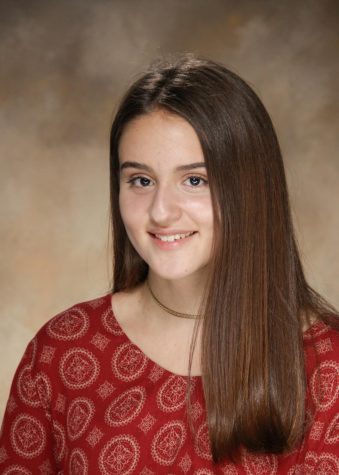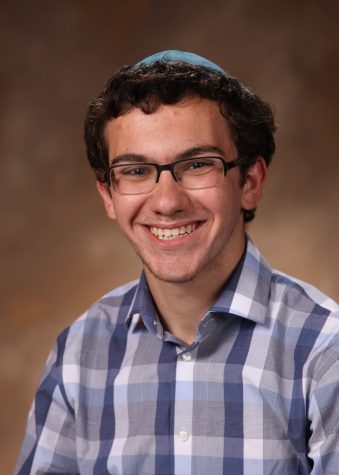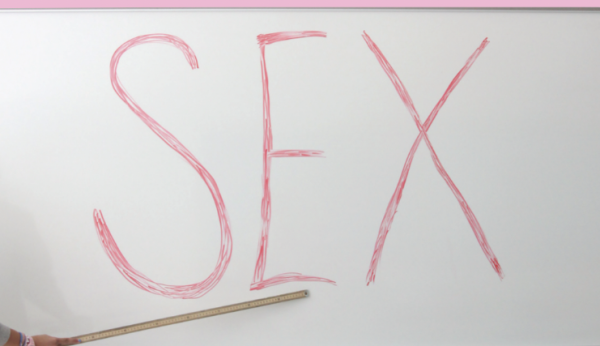Enrollment decline shakes up house of coins
The 2008 recession was a leap off of a very tall cliff for the entire U.S. economy. As millions of people lost their jobs and livelihoods, private schools like CESJDS took a big hit. In the decade from 2004 to 2014, a decade marked by the recession, private school enrollment in the Washington, D.C. area decreased 65 percent. To adjust to a new economic landscape has been a challenge, but school officials say that their efforts have been effective.
One of an independent school’s biggest challenges is to recruit new students and keep current students at the school. This is an effort that falls under the purview of the enrollment management team, headed by Director of Enrollment Management Orna Siegel.
According to Siegel, the peak of private school enrollment across the country was in 2005. After the recession, which Siegel said made it “harder all around for everybody,” enrollment at independent schools plummeted for a several years, then started to maintain a small but steady downward trend that has not ceased. According to Siegel, middle-class incomes are still relatively stagnant while the price of tuition at private schools continues to rise with inflation.
“The economic conditions outside of the school have changed significantly and we’ve changed the way that we budget to reflect those conditions,” Head of School Rabbi Mitchel Malkus said.
Younger parents today tend to want to live in more urbanized areas, which Siegel said contributes to the downward trend in admissions for JDS, a suburban school. The Milton Gottesman Jewish Day School of the Nation’s Capital, formerly known as JPDS, has seen an enrollment increase of 23 percent in recent years, according to their Director of Admissions, Sindy Udell. Milton, which currently enrolls students through sixth grade, has a total of 343 students. Milton is located on 16th Street across the street from Rock Creek Park, making it the closest Jewish day school for students who live in downtown Washington, D.C. Malkus does not worry about Milton, though.
“I don’t look at Milton as competitors but we do have friendly competition on the [geographic] margins,” Malkus said. “If they are successful, when the students come here it increases the number of students we can recruit at the high school level.”
Younger parents are also generally more assimilated into American society and prioritize Judaism less than past generations, which makes the pitch of a Jewish school a bit harder than it was in years past, Siegel said. Since every Jew embraces religion differently, it is sometimes hard for the recruiters to convince parents that the school and its idea of a Jewish education are right for their family.
JDS’ numbers reflect the general downward trend of independent schools. In their tax filings, JDS includes a rough estimate of enrollment in the description of the institution sent to the Internal Revenue Service. In 2005, JDS had approximately 1,500 students. In 2015, the last year available, that number was 1,000. Today, according to High School Principal and Associate Head of School Marc Lindner, there are about 950 students enrolled at JDS.
Recruitment
The enrollment team uses many different methods to recruit, but they all have one idea in common: individualization. Data collection by the enrollment team leads to personalized plans to pitch JDS. Families are identified as possible future members of the JDS community through Jewish preschools, synagogues, parent admissions ambassadors and online searches, among other tools.
“My department does a lot of market research,” Siegel said. “We say, ‘What community is this person coming from? Where do they live? What are their interests? What’s really important to them?’”
JDS mainly targets potential recruits early on, when the kids are in preschool. JDS does not poach students from other independent schools, so it benefits JDS when students enter early.
The recruitment process does not end after families pick their first school, though. For students at other independent schools that end at sixth or eighth grade, JDS presents its case. The strongest of these inter-school arrangements is with Milton, where students will leave after eighth grade starting in 2019.
Once candidates are identified, the pitch becomes about what parents seek for their child’s education. Some parents look for a strong Jewish education, so Siegel’s staff will emphasize the Jewish values of JDS. Other parents, especially in secondary school, Siegel said, look for an environment that can propel their children to an Ivy League college. For these parents, Siegel highlights the college guidance staff and JDS college admissions numbers.
One of the main concerns for prospective parents is the price of JDS. The Upper School tuition is approximately $33,000 for the 2017-2018 school year, while the Lower School tuition is approximately $26,000. Even though around 40 percent of JDS families receive tuition assistance, the admissions staff still has to make the case that JDS is worth the added price compared to Montgomery County Public Schools, which are regarded as some of the best in the country. When she talks to prospective parents, Siegel tries to explain how comparing JDS to public schools is like comparing “apples and oranges.”
“All parents want what’s best for their kid, so when parents say to us, ‘But my kid will be fine in a public school,’ I say to them, ‘Is fine really what you want for your kid?’” Siegel said.
Siegel continued that Montgomery County schools may teach general education subjects like English, history, math and science well, but they do not teach “identity” and “how to be a good person” the same way JDS does. Since these aspects of an education may not be on parents’ minds if they were initially considering public schools, the admissions team does not just recruit, it has to inform first.
“We’re not just marketing professionals, we’re educators about education and a lot of times [we’re] social workers,” Siegel said.
According to Lindner, JDS specializes in teaching Jewish values within a strong interdisciplinary curriculum that manages to emphasize all subjects.
“It’s that type of expansive thinking that I think our students are given an opportunity to do here,” Lindner said. “Students are making connections. It’s not that other Jewish day schools can’t do that. I believe that JDS offers a curriculum of strength across the board that allows for that synergy and that interdisciplinary learning.”
Lindner has two daughters at the school, junior Jade and eighth-grader Sophia. He chose to send his children to JDS because of its values and identity education combined with the strong general education that students could receive at a public school.
“It’s the value system of the school,” Lindner said. “And by that I mean it’s the people. It’s the students, it’s the family, it’s the community that makes up JDS, of people who are invested in education, believe what’s going on here and understand that this is a process.”
Budget Adjustments
As economic conditions deteriorated and recruitment became a harder task, JDS responded by adjusting its budget. In 2015, JDS spent over $250,000 on advertising and public relations, while in the admissions heyday of 2005 JDS spent only $66,000. Malkus said that the marketing budget bump was among other “strategies and methods” to “synergize marketing and recruitment goals.”
Enrollment affects the budget in ways much wider than just advertising. In the 2017-2018 school year, JDS’ budgetary expenses total $24.9 million, according to Chief Financial Officer Julie Hoover. Tuition and fees make up 82 percent of JDS’ income, meaning that JDS spends $20.4 million tuition dollars each year. Because such a high percentage of revenue comes from tuition, total enrollment and the projections for how many students will be at JDS each year heavily influence budget plans.
“Our enrollment management team [is] doing an outstanding job at keeping a close watch of what the trends are and in making their projections,” Lindner said.
He added that the projections for the 2017-2018 school year were very accurate; the school reached the projected number of students late in the summer.
The implications of the budget reach far into students’ experiences at school. The budget dictates how many teachers can be hired; faculty and staff salaries and benefits are 81 percent of JDS’ expenses. The number of teachers that the school can employ contributes to what programs the school can add and how many sections of certain classes can be run.
“The budget is one of the reasons why there are some larger classes this year,” Lindner said. “It does not mean that we are planning for that to continue into the future years. It is absolutely something we are looking at and looking to address.”
The rest of the budget includes maintenance costs, student programs such as clubs and athletics, technology and supply costs and administrative expenses, all of which are indirectly governed by enrollment. Donations from individual families, endowments and the Jewish Federation of Greater Washington help close the gap between tuition and 100 percent funding.
Enrollment also affects the school’s decision-making process beyond the budget, Lindner said. The staff who work on educational initiatives work in tandem with marketing, admissions and the rest of the administration to institute new ideas and execute fixes when parents and students give feedback.
“We absolutely will always take into account information that is given to us from admissions and marketing and incorporate that into our decision making,” Lindner said. “It is a partnership: We all are working together, we all want a healthy vibrant strong JDS and that is what we work on together.”
This story was featured in the Volume 35, Issue 2 edition of The Lion’s Tale, published on Oct. 20, 2017.








